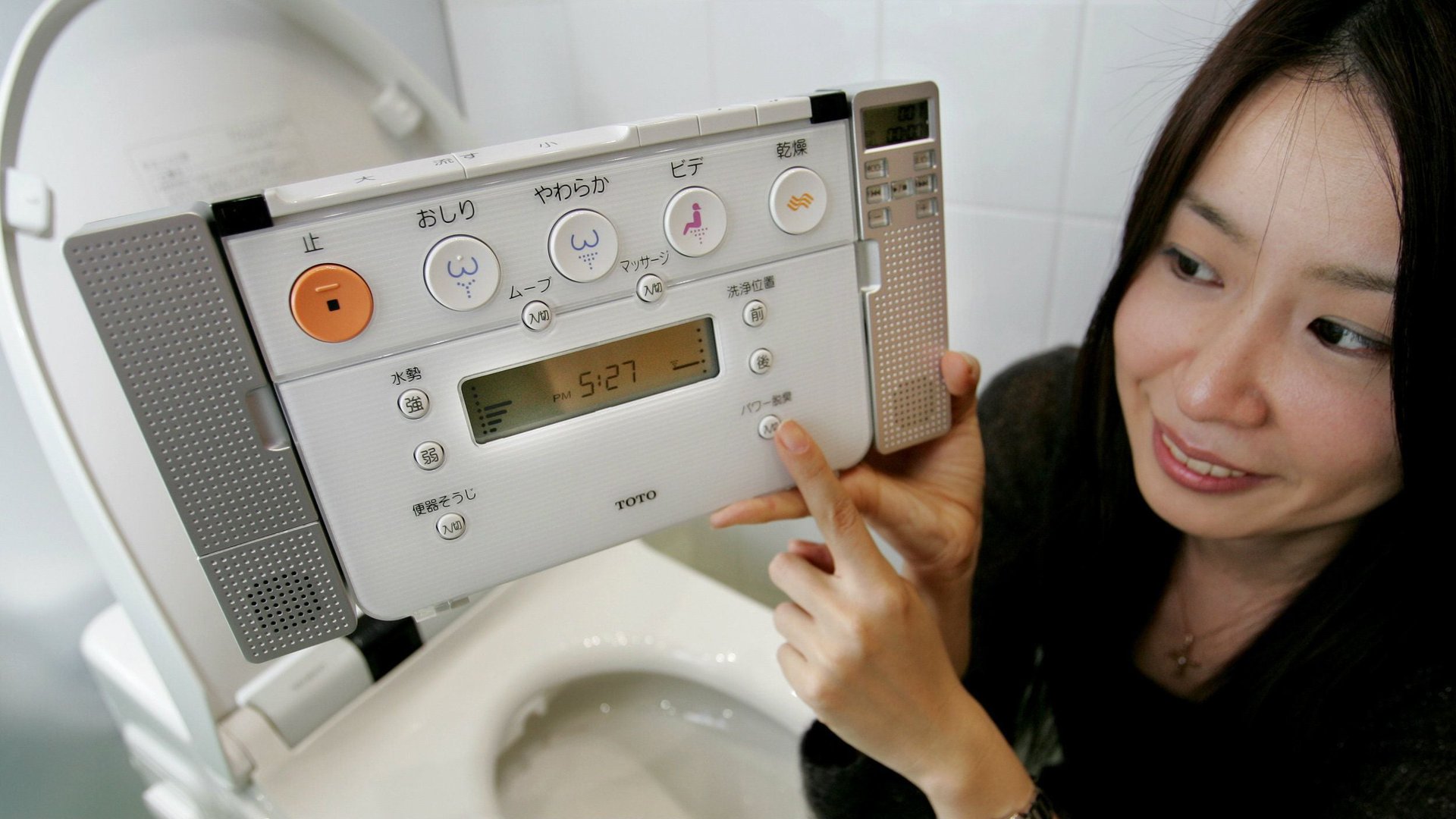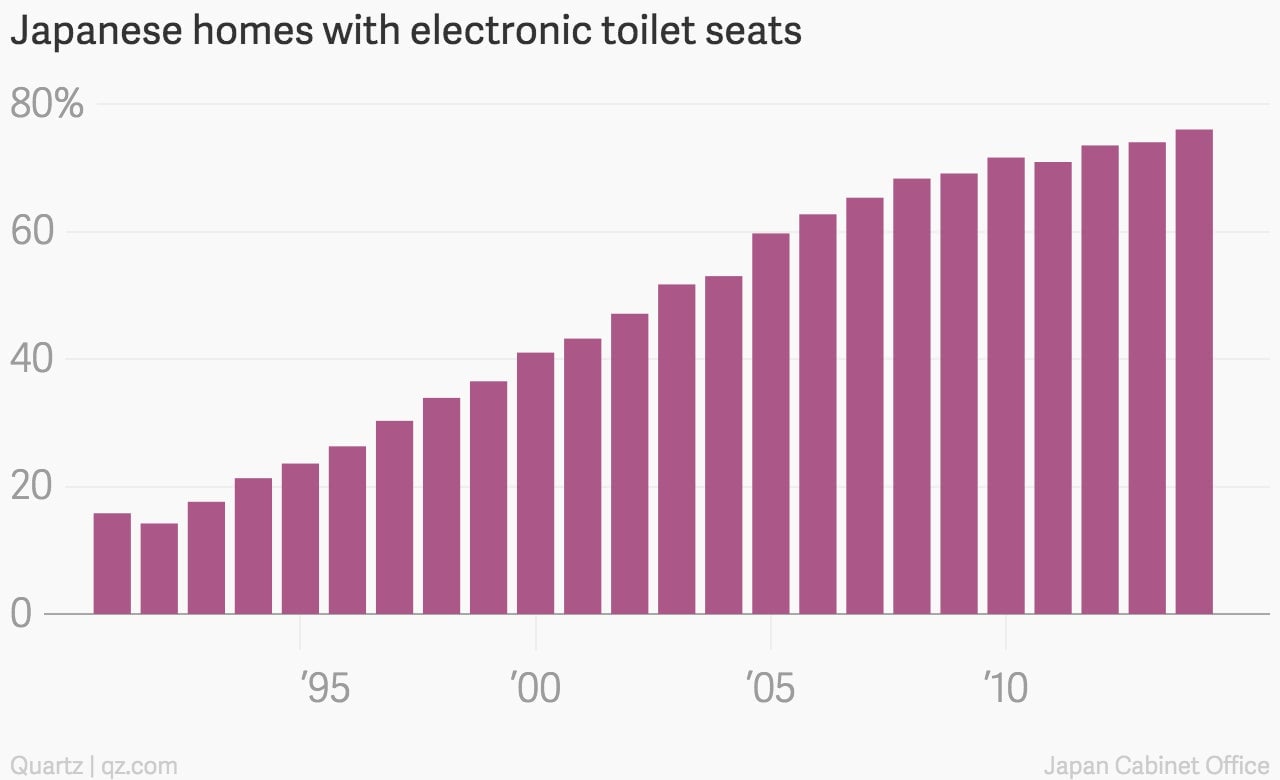Japan tracks electronic toilet seat sales as a measure of national prosperity
New York Times technology writer Farhad Manjoo’s latest column is all about Japanese toilets—specifically, the high-tech electronic bidet seats that can, as he describes it, “spray and buff your nethers with a soothing shower of cleansing H2O.”


New York Times technology writer Farhad Manjoo’s latest column is all about Japanese toilets—specifically, the high-tech electronic bidet seats that can, as he describes it, “spray and buff your nethers with a soothing shower of cleansing H2O.”
In his ode to the joys of toilet “washlets” like the ones made by Japanese high-tech plumbing company Toto, Manjoo mentions that the Japanese government tracks sales of electronic toilet seats “as one of the basic measures of national prosperity.” And indeed it does:

The toilet sales are recorded as part of the government’s statistics on household penetration rates for consumer durable goods, including TVs (97%) cars (81%), and mobile phones (93.2%), all of which hold a substantial lead on washlets, which were in 76% of homes as of 2014.
Getting Japanese households to spend more and drive those percentages even higher has been a central pillar of prime minister Shinzo Abe’s economic policy, dubbed “Abenomics,” which is trying to revive consumer spending and reverse more than a decade of falling prices.
Washlets hold a decisive lead over one other technology that holds an quirky place of honor in the Japanese home: The fax machine. Long after most developed countries abandoned the fax for email and other technologies, it is still going strong in Japan—though it has stalled out at around 50% of homes, even as the washlet continues to climb.
